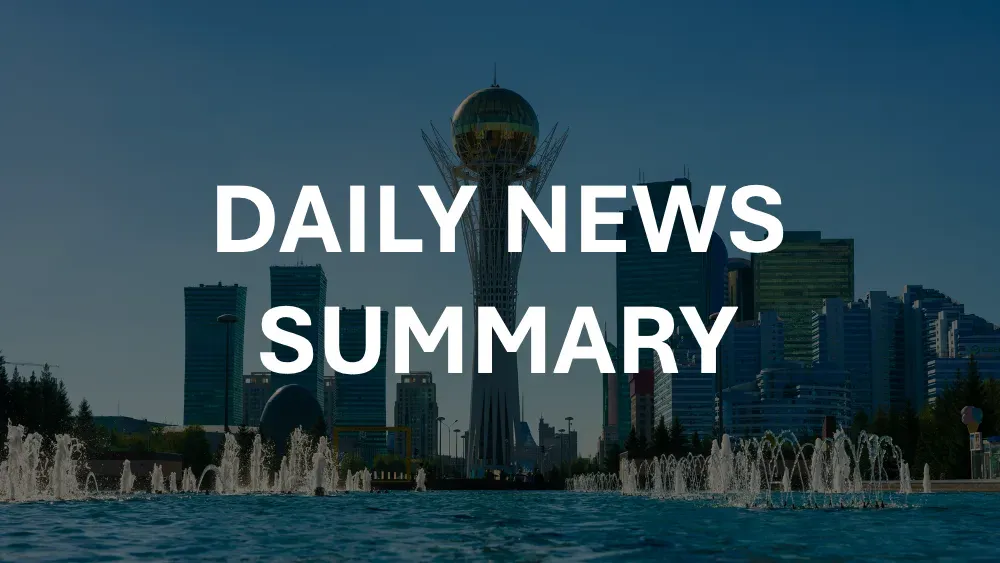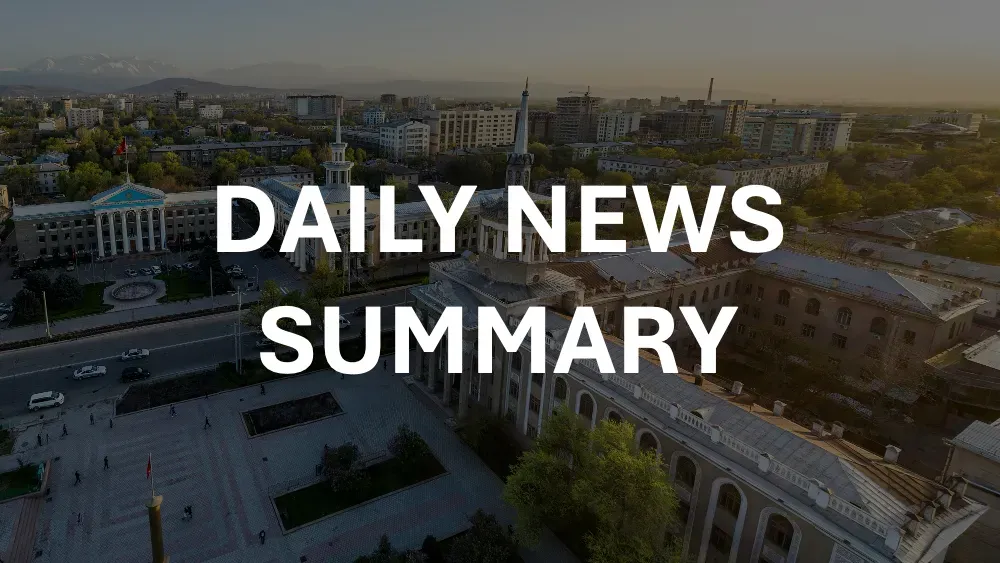📍 Get daily intelligence from Mongolia and Central Asia. Lexica News delivers local news that shapes global decisions—synthesized from local sources international media misses.
Last Update: September 2025
Introduction
Mongolia's Third Neighbor Policy, formalized following US Secretary of State James Baker's 1990 visit, established a framework for balancing relationships with countries beyond its immediate neighbors Russia and China. Over 34 years of implementation, the policy has generated mixed outcomes: initial democratization success in the 1990s, followed by implementation challenges and recent recalibration toward more pragmatic regional engagement.
Current data shows Mongolia maintains diplomatic relations with 170 countries while China absorbs 90% of exports and Russia supplies 92% of energy needs. This analysis documents the policy's evolution, measures achievements against stated objectives, and examines stakeholder experiences from 1990-2024.
The Genesis of Strategic Survival: Understanding Mongolia's Geopolitical Reality
The Sandwich Dilemma: When Geography Becomes Destiny
Imagine running a business where your only two neighbors control your entire supply chain, energy grid, and market access. That's Mongolia's daily reality. With China absorbing 90% of exports and Russia supplying 92% of energy needs, the nation faces what economists call "structural dependency" – a position that would typically doom a small state to satellite status.
Yet Mongolia maintains one of Asia's most vibrant democracies, hosts military exercises with NATO countries, and actively courts Western investment. How? The answer lies in transforming Mongolia foreign policy from reactive survival to proactive diversification.
Consider the case of Oyu Tolgoi, one of the world's largest copper-gold mines. When negotiations stalled with Chinese buyers in 2013, Mongolia leveraged its Third Neighbor relationships to bring in Rio Tinto (Anglo-Australian), securing better terms and technology transfer. The mine now generates 30% of Mongolia's GDP – a practical example of how strategic autonomy Mongolia pursues translates into concrete economic benefits.
Historical Evolution: From Buffer State to Strategic Player
The Third Neighbor concept emerged during US Secretary of State James Baker's 1990 visit, coinciding with Mongolia's democratic revolution. Baker's suggestion to "have three big neighbors" wasn't just diplomatic nicety – it offered a blueprint for escaping the gravitational pull of neighboring authoritarian systems.
Between 1990 and 2000, Mongolia methodically built institutional frameworks supporting this vision. The country joined 12 major international organizations, deployed peacekeepers to 10 UN missions, and established diplomatic relations with 170 countries. Each step reduced dependency on any single partner while building Mongolia's international credibility.
The transformation accelerated after 2010 when rare earth minerals became "the oil of the 21st century." Suddenly, Mongolia's 31 million tons of rare earth reserves – second only to China – transformed it from strategic buffer to critical resource provider. Foreign executives rushing to Ulaanbaatar discovered that accessing these resources required understanding not just mining regulations, but the intricate balance of Mongolia China dependency with Western partnership aspirations.
Implementing the Third Neighbor Strategy: Real-World Applications
Economic Diversification Through Strategic Partnerships
The Mongolia US relations exemplify how Third Neighbor partnerships create tangible business opportunities. In 2023, the US-Mongolia Strategic Third Neighbor Partnership unlocked $1.5 billion in development finance, specifically targeting sectors where Chinese dominance seemed insurmountable.
Take renewable energy. Mongolia possesses wind and solar potential capable of powering half of Asia, yet infrastructure constraints limit development. Through the Third Neighbor framework, Japanese firm SoftBank invested $5 billion in the "Asian Super Grid" project, bypassing Chinese financing while securing Japanese technology and Indian market access. The project demonstrates how Mongolia geopolitics transforms theoretical potential into executable ventures.
South Korean investment offers another instructive case. Korea's 26,000 Mongolian residents create natural business bridges, but the real catalyst was the 2021 Economic Partnership Agreement. Korean firms now operate Mongolia's largest oil refinery, developed through technology transfer impossible under Chinese or Russian partnerships. The refinery reduces fuel import dependency by 30% – a direct strategic autonomy achievement.
Security Cooperation: Soft Power with Hard Benefits
Mongolia's contribution of 1,200 troops to Iraq and 6,000 to Afghanistan puzzled observers – why would a nation between Russia and China support American military operations? The answer reveals Third Neighbor sophistication: these deployments earned Mongolia "Global Partner" status with NATO, unlocking military modernization programs worth $500 million.
More importantly for business, this security cooperation creates trust enabling sensitive technology transfers. When establishing satellite communications networks or cybersecurity systems, Western firms can operate in Mongolia with confidence impossible in neighboring authoritarian states. A European telecommunications executive noted: "Our board approved the Mongolia project specifically because their Third Neighbor alignment guaranteed intellectual property protection."
The peacekeeping contributions – over 10,000 troops deployed globally – generate another unexpected benefit: English language proficiency and international exposure for Mongolia's military and civilian leadership. This creates a professional class comfortable negotiating with Western partners, reducing transaction costs for international businesses.
Navigating the Russia-China Dynamic: The Art of Balance
Energy Infrastructure: The Power of Siberia 2 Case Study
The Power of Siberia 2 pipeline perfectly illustrates Mongolia's strategic positioning. This 2,600-kilometer pipeline will transport 50 billion cubic meters of Russian gas annually to China, generating an estimated $2 billion yearly in transit fees for Mongolia. But the real value lies in negotiating leverage.
Initially, Russia and China planned routing the pipeline through Kazakhstan, bypassing Mongolia entirely. Mongolia's Third Neighbor relationships, particularly with Japan and the US, created alternative energy development options that forced Russia and China to reconsider. The final agreement includes not just transit fees but guaranteed gas supplies for Mongolia's industrial development – transforming the country from energy dependent to energy transit hub.
For businesses, this means new industrial zones with guaranteed energy supplies, enabling manufacturing previously impossible in Mongolia. A German automotive parts manufacturer recently announced a $300 million facility specifically because the pipeline guarantees competitive energy costs – impossible without Mongolia's strategic maneuvering.
Mining and Minerals: Breaking the Processing Monopoly
Mongolia's rare earth situation exemplifies both challenge and opportunity. Despite holding the world's second-largest reserves, every kilogram must transit through Chinese processing facilities. This creates what economists call "value chain capture" – Mongolia extracts raw materials worth $100 per ton that become products worth $10,000 after Chinese processing.
The Third Neighbor strategy attacks this bottleneck through technology partnerships. Japan's JOGMEC invested $150 million in pilot processing facilities, while the EU's Critical Raw Materials Act designates Mongolia as a "strategic partner," unlocking $2 billion in processing technology investments. These partnerships won't eliminate Chinese processing overnight, but they demonstrate how strategic autonomy Mongolia pursues creates options where none existed.
The Democracy Dividend: Why Values Matter for Business
Institutional Stability Through Democratic Governance
Mongolia's democratic institutions, strengthened through Third Neighbor partnerships, create predictability essential for long-term investment. Unlike neighboring authoritarian systems where policy shifts with leadership changes, Mongolia's democratic processes ensure continuity.
Consider mining law evolution. When public pressure demanded greater resource nationalism in 2012, Mongolia didn't expropriate foreign assets like many resource-rich nations. Instead, democratic processes produced compromise legislation balancing national interests with investor protection. The US-Mongolia Agreement on Transparency in Matters of International Law and Investment helps ensure such stability continues.
Rule of Law and Contract Enforcement
Third Neighbor relationships strengthen Mongolia's legal institutions through capacity building and international arbitration access. The American Chamber of Commerce in Mongolia reports contract dispute resolution averages 18 months – comparable to developed nations and far superior to regional alternatives.
A British mining executive explained the practical impact: "We can actually enforce contracts in Mongolia. Try doing that in some neighboring countries. The Third Neighbor backing gives their courts credibility and independence impossible in authoritarian systems."
Documented Implementation Gaps and Failed Initiatives
Aid Delivery Inconsistencies
US development assistance demonstrates significant gaps between commitments and delivery. The Millennium Challenge Corporation's $350 million water compact for Ulaanbaatar committed funding in 2019, with $214.8 million (61.4%) disbursed by September 2024. However, 2025 budget cuts threaten program termination, with MCC officials stating the agency "won't last until the end of the year."
USAID allocation to Mongolia dropped to $13 million in 2024, down from higher historical levels, before Biden's final $25 million commitment. A previous MCC compact (2008-2013) valued at $284.9 million for property rights, transportation, and energy faced similar implementation challenges and delays.
Japanese Aid Implementation Problems
Despite Japan providing 47.7% of bilateral assistance (2010-2018), project implementation encountered systematic obstacles. Japanese assessments document frequent personnel reassignment and career changes among Mongolian staff causing project delays, necessitating repeated training, and resulting in loss of transferred technologies.
Mongolia's tendency toward frequent government reorganization created additional complications for Japanese ODA projects, requiring constant adaptation to new counterpart organizations and preparation of multiple contingency plans around election cycles.
Third Neighbor Policy Limitations
Policy outcomes include unintended consequences alongside stated benefits. While achieving democratization objectives in the 1990s, implementation resulted in widespread corruption, environmental destruction, and breakdown of traditional industries like animal husbandry according to policy assessments.
The more Mongolia developed defense cooperation with the United States, the greater risks of antagonizing Russia and China. Observers note that claims about Mongolia's "pivotal role" were often inaccurately presented as successful Third Neighbor outcomes without supporting evidence.
Understand Mongolia Like an Insider
This analysis draws from extensive research, but the story continues to evolve daily. Lexica synthesizes breaking developments from dozens of Mongolian news sources—from mining policy changes to local protests that never make international headlines.
Our daily intelligence briefs help executives, diplomats, and researchers track:
- Regulatory shifts affecting foreign investment
- Local opposition to development projects before they escalate
- Market dynamics that signal opportunity or risk
- Political developments that reshape the business landscape
Future Trajectory: Evolving Strategy for New Realities
From Western Focus to Multi-Vector Approach
Mongolia's recent recalibration acknowledges new realities. The 2024 visit by Putin, despite ICC warrants, signals recognition that geographic neighbors require engagement regardless of Western preferences. Simultaneously, deepening partnerships with India ("spiritual third neighbor") and ASEAN countries reflects sophisticated understanding that meaningful alternatives to China must include regional partners, not just distant Western nations.
Technology and Digital Sovereignty
The next phase of Third Neighbor evolution focuses on digital infrastructure and technology sovereignty. Mongolia's partnership with SpaceX for satellite internet and collaboration with Estonia on digital governance creates virtual alternatives to physical dependency. A Mongolian startup ecosystem, backed by Silicon Valley venture capital, demonstrates how digital economies can transcend geographic constraints.
Critical Minerals and Green Transition
As the world shifts toward renewable energy, Mongolia's uranium, lithium, and rare earth reserves become increasingly strategic. The Third Neighbor framework positions Mongolia as the "responsible alternative" to Chinese mineral monopolies. Recent agreements with Tesla and European battery manufacturers show how environmental, social, and governance (ESG) considerations create competitive advantages for democratically-governed Mongolia over authoritarian alternatives.
Practical Implications for Foreign Stakeholders
For Diplomats: Understanding the Triangular Dance
Diplomatic engagement with Mongolia requires sophisticated understanding of triangular dynamics. Every bilateral initiative must consider impacts on Mongolia's relationships with Russia and China. Successful diplomacy means helping Mongolia maintain balance rather than forcing choices.
The recent Comprehensive Strategic Dialogue between the US and Mongolia demonstrates effective approach – focusing on concrete economic benefits rather than geopolitical alignment. Diplomats report greater success framing initiatives as "supporting Mongolian independence" rather than "countering Chinese influence."
For Business Executives: Navigating Multiple Stakeholders
Foreign executives must recognize that major projects in Mongolia involve visible and invisible stakeholders. A mining project might have Australian operators, Chinese customers, Russian energy suppliers, and American financial backers – all requiring careful balance.
Successful businesses create "win-win-win" scenarios benefiting Mongolia, regional powers, and Third Neighbor partners. Rio Tinto's Oyu Tolgoi expansion succeeded by ensuring Chinese smelters received concentrate, Mongolian workers gained skills, and Western shareholders earned returns – satisfying all sides of Mongolia's strategic triangle.
For Expatriates: Living the Balance
Expatriates experience Third Neighbor dynamics daily. Internet connections route through Chinese infrastructure while banking systems follow Western standards. Russian influences permeate energy and transportation while American soft power dominates entertainment and education. Understanding these overlapping systems helps expatriates navigate practical challenges from visa regulations to business regulations.
Conclusion: Policy Assessment 1990-2024
Mongolia's Third Neighbor Policy implementation over 34 years reveals mixed outcomes that diverge from initial objectives. While achieving democratization goals in the 1990s, the policy has not fundamentally altered Mongolia's economic dependence patterns: China maintains 90% of exports and Russia 92% of energy supplies despite extensive third neighbor engagement.
Aid delivery data demonstrates persistent gaps between commitments and implementation. US development assistance faces recurring funding cuts, with the $350 million MCC water compact threatened by 2025 budget reductions. Japanese aid, representing 47.7% of bilateral assistance from 2010-2018, encountered systematic implementation obstacles due to Mongolian government instability and personnel turnover.
Geographic constraints continue limiting policy effectiveness. Mongolia's landlocked position creates structural dependence on neighbors for trade routes, while third neighbor security partnerships offer no concrete guarantees. The 2016 Dalai Lama visit demonstrated continued Chinese leverage through border closure threats, forcing policy reversals despite third neighbor diplomatic support.
Current assessments indicate policy recalibration toward greater pragmatism with immediate neighbors. Development aid inconsistencies from third neighbor partners force greater reliance on Russia and China for funding and investment. Mongolia's diplomatic relationships with 170 countries provide political legitimacy but limited economic alternatives to geographic realities.
Stakeholder experiences suggest that while third neighbor partnerships support democratic institutions and provide alternative diplomatic channels, they cannot overcome structural economic dependencies created by geography and trade patterns. The policy's effectiveness appears conditional on consistent third neighbor engagement, which proves difficult to maintain across different political cycles in partner countries.
Frequently Asked Questions
What exactly is Mongolia's Third Neighbor Policy?
The Third Neighbor Policy is Mongolia's foreign policy strategy of building strong relationships with countries beyond its two physical neighbors, Russia and China. Originally referring primarily to the United States, it now encompasses partnerships with Japan, South Korea, India, the European Union, and other democratic nations. The policy aims to balance Mongolia's unavoidable geographic dependencies with diverse international partnerships that provide economic alternatives, democratic support, and technological cooperation.
How does the Third Neighbor Policy benefit foreign businesses?
Foreign businesses benefit through reduced political risk, as Mongolia's multiple partnerships create stability and predictability. The policy enables access to international arbitration, protection of intellectual property rights, and technology transfer opportunities that wouldn't exist in a China or Russia-dominated system. Additionally, Third Neighbor backing helps Mongolia maintain rule of law and democratic governance, essential for long-term investment security. Companies also gain leverage in negotiations, as Mongolia actively seeks to diversify from Chinese and Russian partners.
Can Mongolia really balance between China and Russia?
While Mongolia cannot escape geographic reality – 90% of trade transits through China and 92% of energy comes from Russia – the Third Neighbor Policy creates meaningful room for maneuver. Mongolia successfully negotiates better terms on major projects by leveraging alternative partnerships, maintains democratic governance despite authoritarian neighbors, and secures technology and investment from diverse sources. The balance isn't perfect, but it provides significantly more autonomy than similar small states between major powers typically achieve.
What role does the US play as a Third Neighbor?
The United States serves as the primary Third Neighbor partner, providing $289 million in development assistance, supporting democratic institutions, and facilitating Western investment. The 2019 Strategic Partnership and 2024 Comprehensive Strategic Dialogue created frameworks for economic cooperation, particularly in critical minerals and renewable energy. US backing helps Mongolia access international financial institutions, provides military cooperation and training, and offers political support in maintaining independence from Russian and Chinese pressure.
How sustainable is the Third Neighbor strategy long-term?
The strategy's sustainability depends on maintaining value for all stakeholders. As long as Mongolia provides critical minerals for global supply chains, serves as a democratic example in authoritarian-dominated Asia, and offers geographic advantages for regional connectivity, Third Neighbor partners will remain engaged. The recent evolution toward multi-vector diplomacy, including stronger ties with India and ASEAN, suggests Mongolia is adapting the strategy for long-term viability rather than abandoning it.
Track Mongolia's Critical Minerals Sector with Local Intelligence
The rare earth story exemplifies why local sources matter. While international media reports MOUs and ministerial visits, Mongolian outlets cover the community protests, water disputes, and regulatory changes that actually determine project outcomes.
Lexica delivers what you're missing:
- Daily briefs at 7AM Ulaanbaatar time covering 40 top stories from politics to economics
- Full-text synthesis from sources in Mongolian
- Searchable archive to track how today's announcements connect to yesterday's promises
- Multi-country coverage across Central Asia for regional context
Whether you're evaluating investment opportunities, monitoring supply chain risks, or analyzing geopolitical developments, local intelligence reveals what international headlines obscure.








